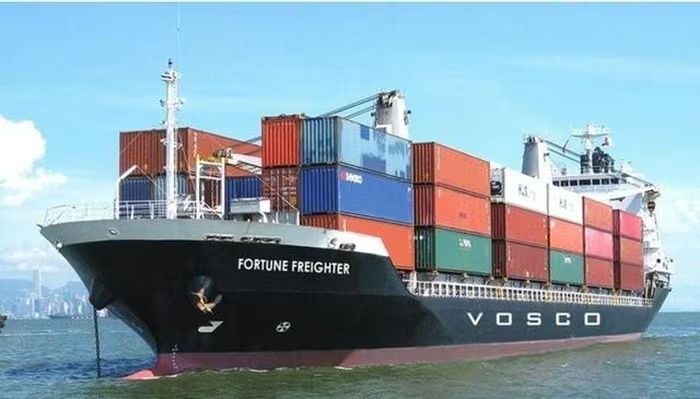Huge profit in Q3, Vosco still struggles to complete yearly profit target
Posted on: 24/10/2025
Vietnam Ocean Shipping Joint Stock Company (Vosco, HoSE: VOS) has announced its consolidated financial statements for the third quarter of 2025, showing improved business results compared to the first half of the year, despite continued revenue decline.
Specifically, net revenue in Q3 reached VND 849.7 billion, down 33% compared to the same period in 2024. However, net profit surged to VND 131.6 billion, while in the same period last year, the company reported a loss of VND 14 billion. This marks Vosco’s highest quarterly profit in the past five quarters.
Accumulated over the first nine months of the year, Vosco recorded revenue of over VND 2,147 billion, nearly halving from the same period last year. Net profit after tax reached VND 88 billion, down 74% compared to VND 344 billion in the first nine months of 2024. For 2025, Vosco has set a target of VND 376 billion in pre-tax profit, but has so far achieved less than one-third of that goal.
According to the company’s explanation, the main reason for the revenue decline came from its trading activities, which brought in only VND 650 billion in the first nine months, down sharply from more than VND 2,250 billion in the same period last year. In addition, the return of chartered vessels such as Dai An (oil tanker) and Dai Hung (chemical tanker) in March 2025, as well as the sale of the Vosco Star vessel at the end of July, also reduced revenue.
The company’s core shipping operations were also affected, as many vessels underwent long-term scheduled maintenance, including Vosco Sky, Vosco Unity, Vosco Starlight, Dai Thanh, Lucky Star, and Fortune Freighter. These ships did not generate revenue during maintenance but still incurred operating costs, contributing to a decrease in gross profit.
Despite many difficulties earlier in the year, the Q3 results showed positive recovery signals. The shipping market improved, with the Baltic Dry Index (BDI) reaching 2,265 points at the end of July and maintaining around 2,000 points throughout the third quarter — significantly higher than the average of the first six months of the year.
In the oil transport segment, freight rates on routes from South Korea and Singapore increased in Q3, helping the company improve its profit margins. As a result, Vosco recorded a positive operating profit from its core business, compared to losses in the first two quarters.
Furthermore, the company reported a profit of over VND 99 billion from the sale of the Vosco Star vessel, contributing to Q3’s net profit of VND 131 billion. This gain also helped Vosco eliminate the accumulated loss of over VND 45 billion from the first half of the year.

Illustrative image
As of the end of Q3/2025, Vosco’s total assets reached nearly VND 4,000 billion, an increase of more than VND 1,000 billion compared to the beginning of the year, mainly due to further investment in its fleet. The value of fixed assets increased by more than VND 1,300 billion. Meanwhile, financial debt rose to VND 856 billion from zero at the beginning of the year. Consequently, interest expenses in the first nine months soared to nearly VND 20 billion, significantly higher than just over VND 60 million in the same period last year.
On November 7, Vosco will hold an extraordinary general meeting of shareholders to approve the plan to sell the Vosco Unity vessel (53,552 DWT, built in 2004) to raise capital for new fleet investment. The company also plans to sell or sell and lease back one to three Supramax bulk carriers to recover capital and maintain transport capacity.
The company has already received three Supramax bulk carriers — Vosco Starlight, Vosco Sunlight, and Vosco Jubilant — along with two leased vessels expected to be received in November. At the same time, the company is monitoring the market to implement plans to purchase or build four new MR product tankers, each costing up to USD 52 million.
Vosco is also expanding into shipbuilding, conversion, and repair. The company plans to add new business lines such as “ship and floating structure building” and “sports and recreational boat manufacturing” to its charter. The goal is to form a closed value chain, enhance technical autonomy, reduce operating costs, and improve competitiveness.